|
In Eastern Iowa, farmland is everywhere. This time of year, a Saturday drive will wind you past golden fields of soybeans, dried-out corn stalks ready for the combine, and even empty stretches where the farmer has already reaped his crop. Recently, the cool fall days have given way to autumn rain and thunderstorms, leaving fields tacky and waterways full of runoff precipitation. For one of our farm clients this season, frequent rainstorms were leaving a section of his ground constantly muddy and eroding the ground. Ready for a long-term solution to these troubles, our farm friend gave our crew at Gravel Grading and Excavating a call. What are Gabion Baskets? After looking at the property and assessing possible options, our crew determined that a gabion basket would be best for this farmer. A gabion basket is a cage, cylinder, or box filled with rocks, concrete or sometimes sand and soil. Gabions are used in many situations including the stabilization of earth movement and erosion, river control, reservoirs, canal refurbishment, landscaping, and retaining walls. For our purposes, we utilize this design along farm ground to help slow down and direct water runoff to appropriate basins and streams. Installation: Phase 1 In the shop, we start by putting together wire baskets. These baskets will hold 6-9" rocks on the steep grade that kept getting eroded along our farmer's property. Once in place, the gabion baskets will hold the rock and act as a dam, slowing the water while also holding the soil in place and preventing dirt erosion. Installation: Phase 2 After the baskets were put together, we could head out to the site and begin shaping the existing slope into a proper grade. Using our LinkBelt excavator, our crew took this ditch that formed after years of heavy-rain events and laid back the edges to create a foundation. Installation: Phase 3 The next phase of our gabion basket installation at Gravel Grading and Excavating is laying out fabric on the exposed soil. This acts as another barrier and an erosion prevention measure. On top of the fabric, we laid our wire baskets one section at a time. As we laid them out, our crew ring them together to reinforce the strength of the entire gabion system. After the baskets were ringed together, we brought in the excavator to fill them with 6-9" rip-rap rock. Once full, the individual baskets could be closed and ringed shut, and the next section of tarp and baskets could be installed. As you see in the photos, this process happens one step at a time from the bottom of the slope up to field level. Installation: Phase 4 Once the baskets were filled, excavator operator Brian Noonan installed rip rap around the basket, reinforcing the adjacent hillside for further erosion protection. Finishing Touches Once the rip-rap was installed, the gabion basket worked as it was designed: water from the field would slope into the basket and accumulate in the basin, as illustrated in the photos below. The baskets and rip-rap would also ensure that the hillside would not erode any further, and the property owner's farm ground was protected. How can we move the earth for you?
A big thanks goes out to our client and crew for making this project successful. We love seeing our plans come together and create a solution that will work for decades to come. If we can move the earth for you, contact us at 563-542-6610 or [email protected].
1 Comment
|
hereYou'll find all the newest products and services recommended by Terry and Gravel Grading & Excavating. Categories
All
Archives
April 2024
|

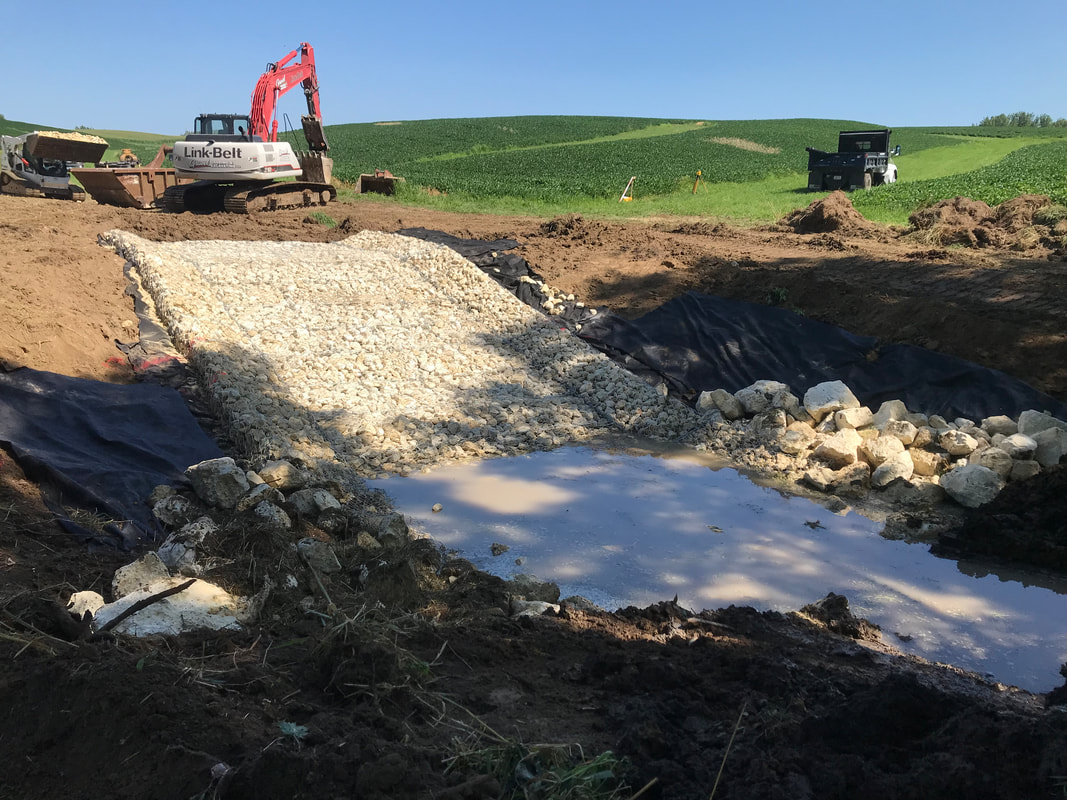
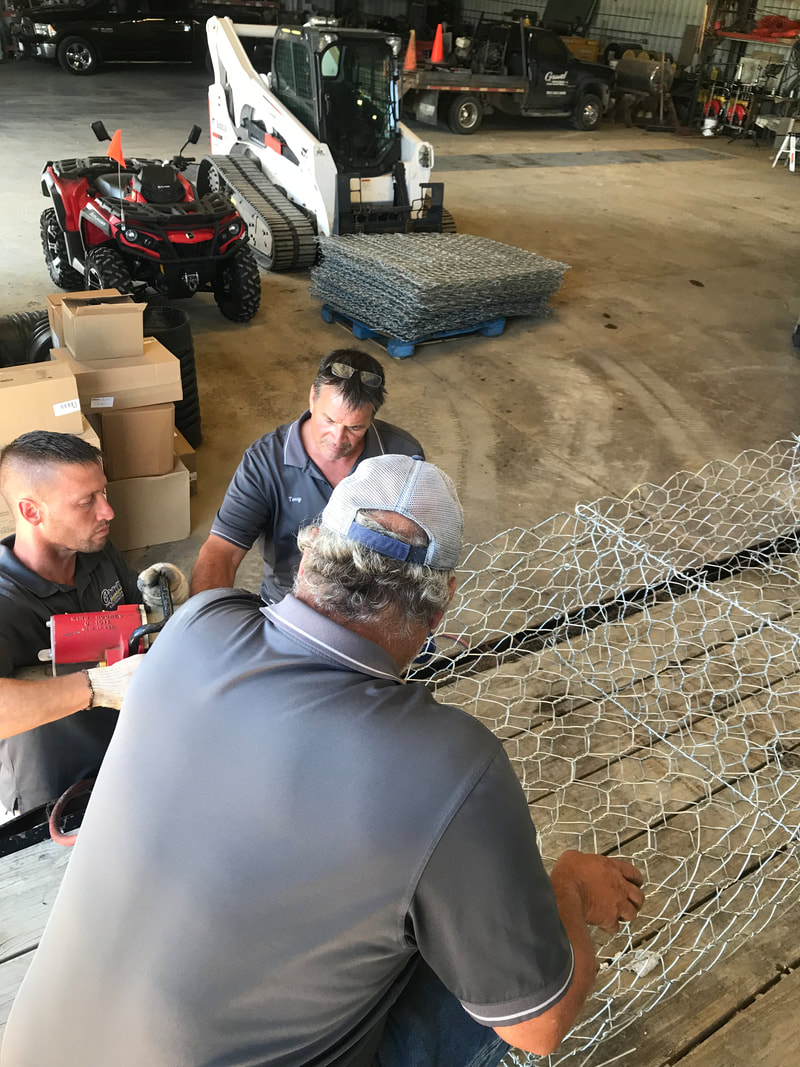
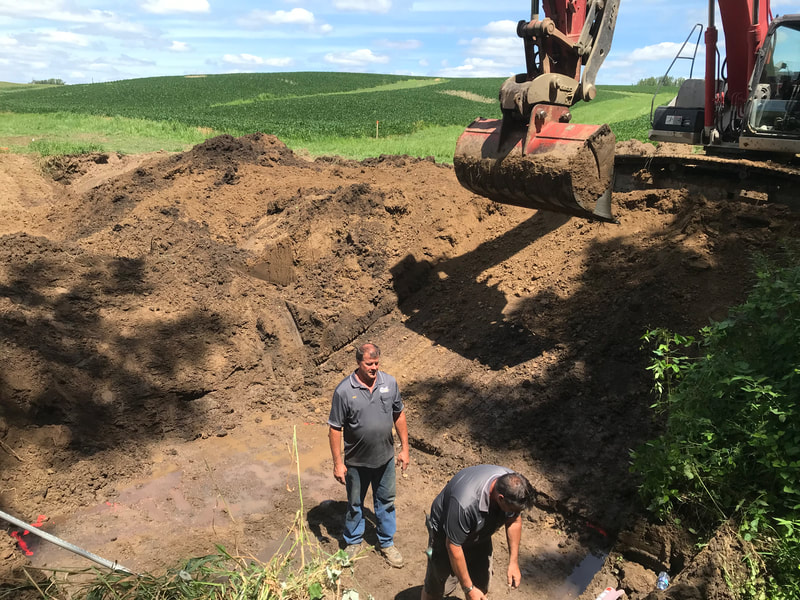
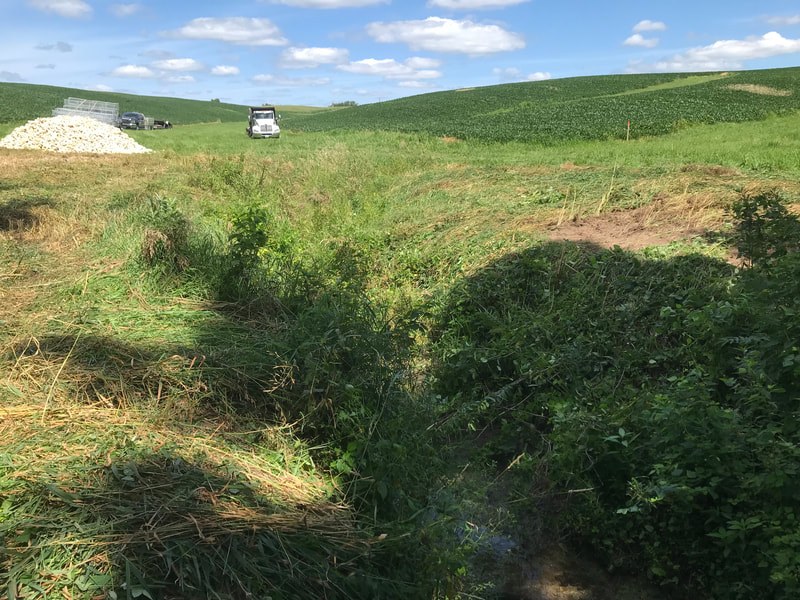
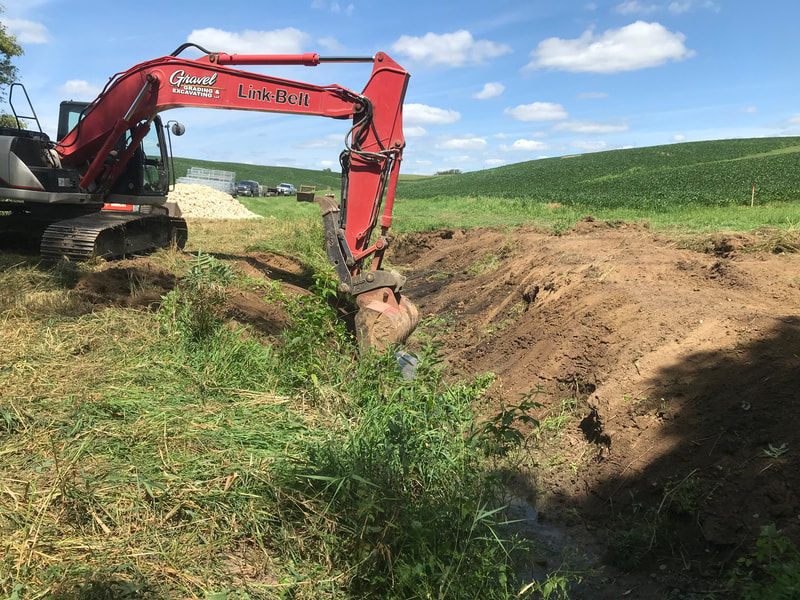
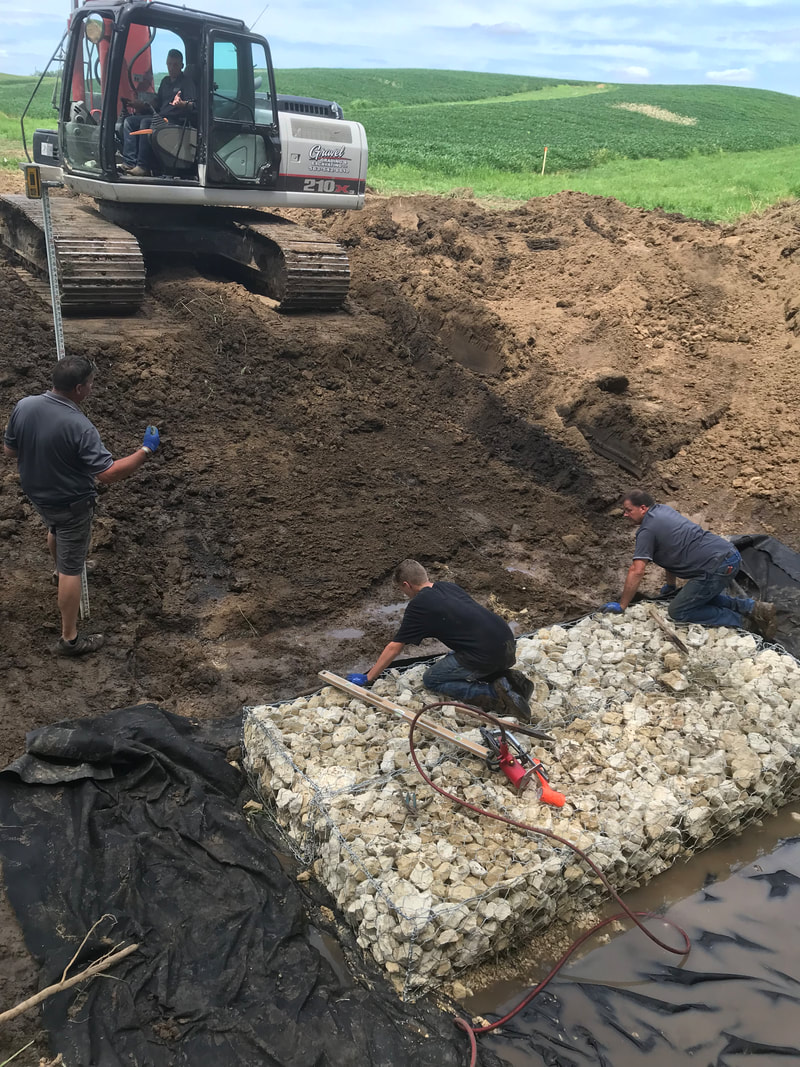
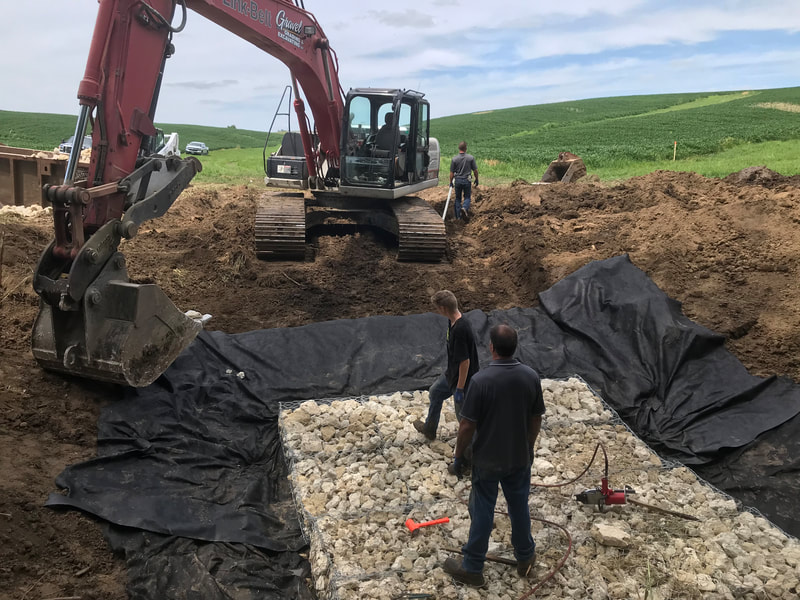
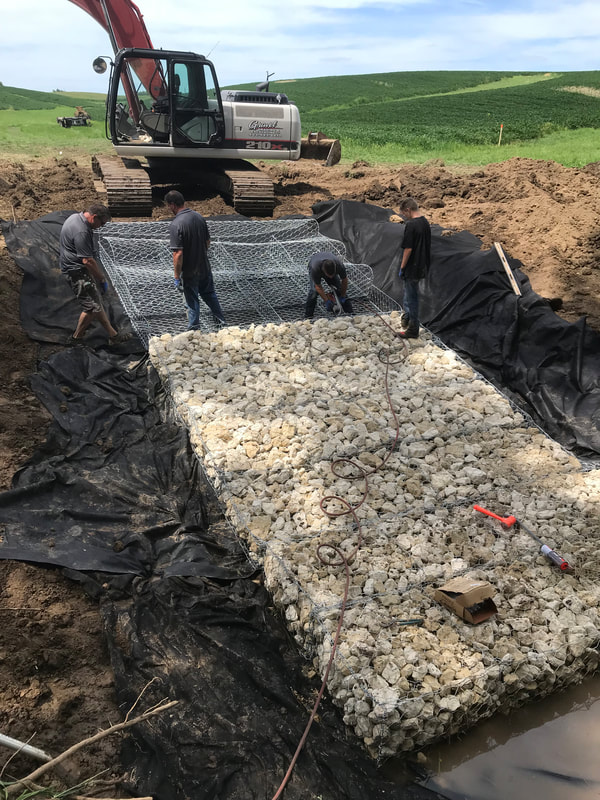
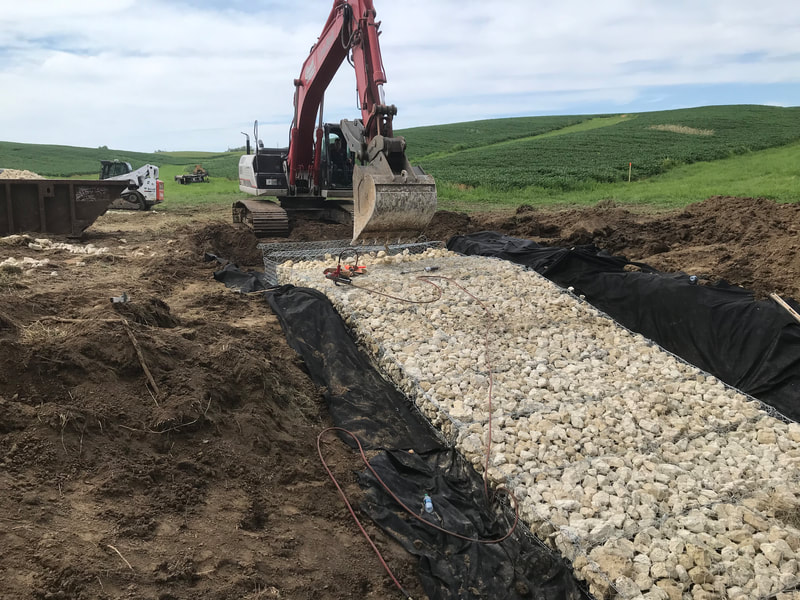
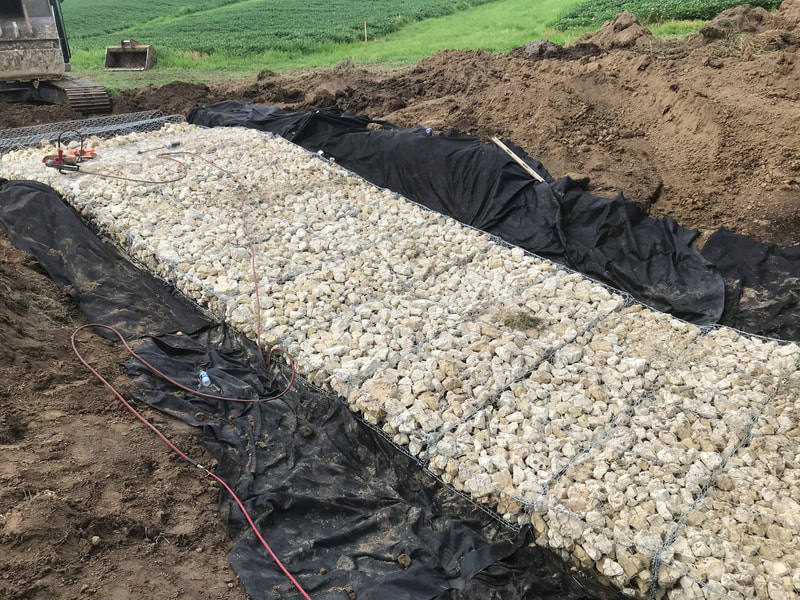
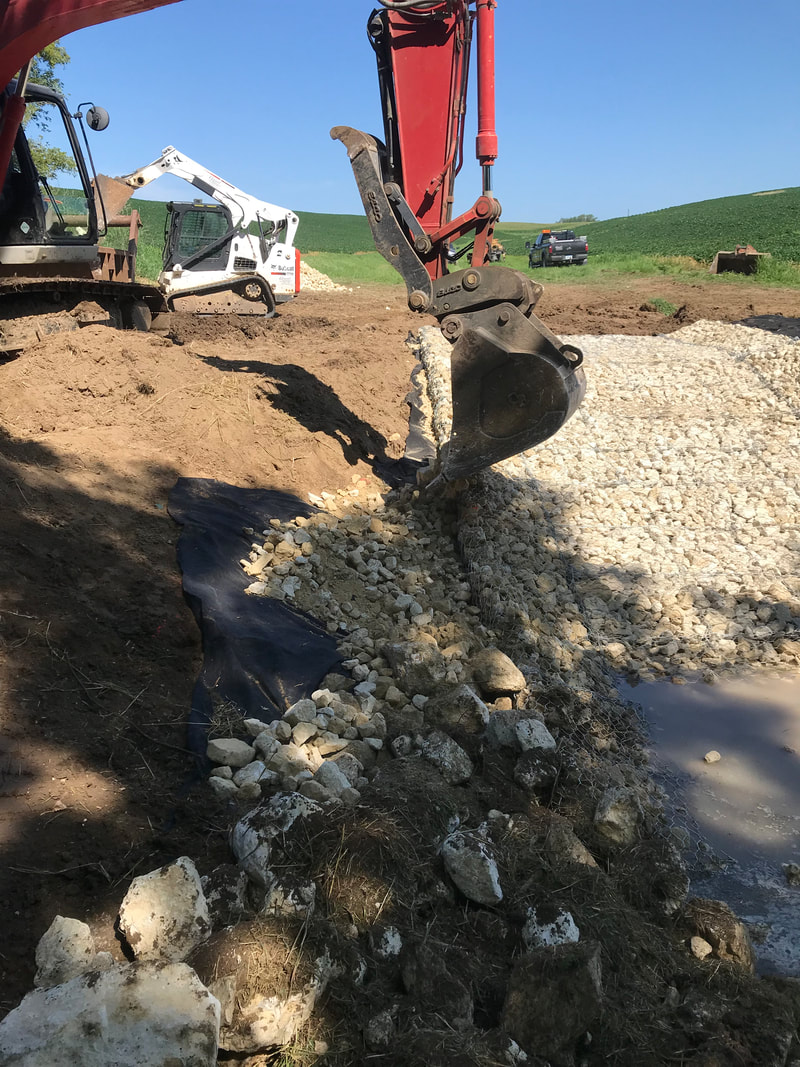
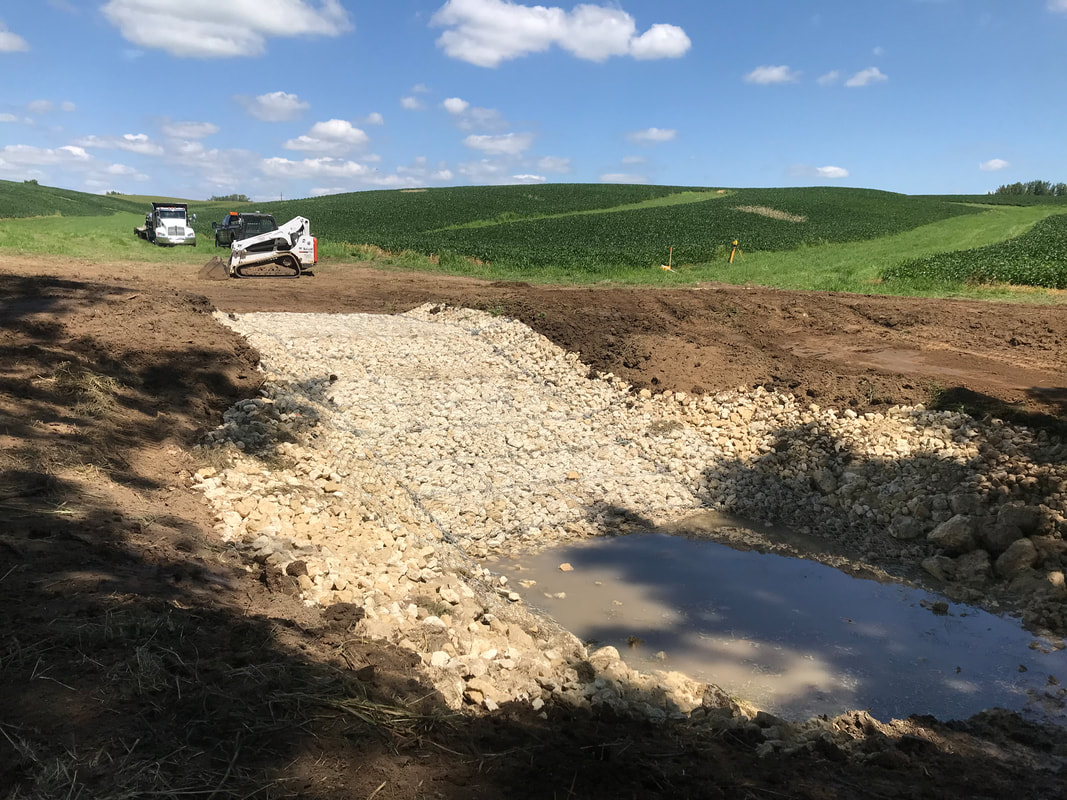
 RSS Feed
RSS Feed
